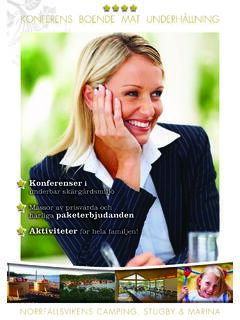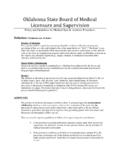Transcription of Approximate Time and Temperature Relationship …
1 SCALD PREVENTION Many people don't know that hot water can be danger in the home. Hot water can burn like fire. A scald burn is a burn from hot liquid or steam. Young children and older adults are at the highest risk because they have thin skin, but everyone can be hurt by hot water. How hot is the water coming out of your tap? Set your water heater at 120 degrees Fahrenheit/48 degrees Celsius. To test, run hot water for 3-5 minutes, and then test with a candy or meat thermometer. If too hot, lower the thermostat on the water heater and wait 24 hours to retest the Temperature . In the Bathroom Fill the tub. Place a skid-resistant surface in the tub or shower. Run your hand through the water to test for hot spots. Then help the child (or elderly or adult with disabilities) get in. When children are in or near the tub, watch them closely. Young children and older people have thin skin. They burn more quickly.
2 Never leave them unattended Install grab bars in showers and tubs. Install special tub spouts and shower heads that prevent hot water burns. These sense if the water gets hot enough to cause a burn and shut off the flow of water. In the Kitchen Wear long oven mitts to protect your skin when cooking or handling hot food. Turn pot handles toward the back of the stove so children cannot pull them down. Use back burners when cooking. Place hot dishes in the middle of the table. Keep children away from the stove when you are cooking. Put tape on the floor so they can learn to stay out of the no-kid-zone. Food cooked in the microwave can get very hot and cause a burn. Use oven mitts when you remove the lid; stir and test food before serving to make sure it is cool enough to eat. If you must leave the kitchen with something cooking, take a wooden spoon or oven mitt with you as a reminder that something is cooking.
3 Prevent Burns from Hot Drinks Keep hot drinks away from the edge of tables and counters. Do not use tablecloths or placemats (unless skid-proof) because young children can pull them down. Use a travel mug with a tight-fitting lid for all hot drinks. This can help prevent a burn if the cup tips over. Do not hold or carry a child while you have a hot drink in your hand. If You Burn Your Skin Immediately cool a burn with cool running water for at least 3 minutes. Do not put ice, butter or lotion on the burn. This could make it worse. Call your doctor or 9-1-1 if the burn looks bad or is larger than your hand. Source: Home Safety Council ( ) Approximate time and Temperature Relationship to Severe Burns in Children and the Elderly Water Temperature time for 3rd degree burn to occur 104 degrees F Safe for bathing 120 degrees F 5 minutes 125 degrees F 2 minutes 130 degrees F 10 seconds 140 degrees F 3 seconds 148 degrees F 2 seconds 155 degrees F 1 second Approximate Temperature of Frequently Encountered Hot Liquids Spa/Jacuzzi 102-104 degrees F Fast food coffee 175-185 degrees F Boiling water 212 degrees F Frying grease 300-500 degrees F NATIONAL BURN AWARENESS WEEK IS FEBRUARY 6-12, 2012.
4 This is brought to you by Regional Medical Center at Memphis. For more information, contact Denise Headin at 901-545-6841 or






